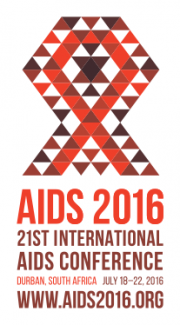Posted on June 17, 2016

Kenneth H. Mayer, Olive Shisana and Chris Beyrer:
"Since AIDS was fi rst recognised in 1981, more than 75 million HIV infections and more than 36 million deaths have occurred. HIV infection is no longer an inexorable death sentence but a chronic manageable infection. Key factors responsible for this transformation have been an understanding of the modes of HIV transmission, the development of eff ective combination antiretroviral therapy, and the validation of surrogate markers to monitor the response to treatment. But currently less than half of all people living with HIV worldwide have access to life-saving antiretroviral therapy, at a time when donor interest is uncertain and global funding flattening.
The upcoming 21st International AIDS Conference (AIDS 2016) in Durban, South Africa, on July 18–22, 2016, must take on the challenge of expanding access to HIV treatment. HIV incidence is not declining fast enough to reduce the global burden of the epidemic. In some populations, including young women in sub-Saharan Africa, young gay men and transgender women worldwide, and people who inject drugs in eastern Europe and central Asia, HIV infection rates are rising in 2016. The basics of HIV prevention have not been delivered for these populations (ie, condoms, clean needles, opiate substitution therapy), let alone provision of newer prevention methods such as antiretroviral preexposure prophylaxis (PrEP). Human rights and social justice protections required for safe implementation of evidence-based HIV prevention have not been established in many countries. Some nations have enacted harmful laws and policies that undermine effective HIV responses, including laws further marginalising lesbian, gay, bisexual, and transgender people. A highly eff ective HIV vaccine, or a cure, remains elusive. As the HIV world gathers in Durban this July, we face enormous challenges."